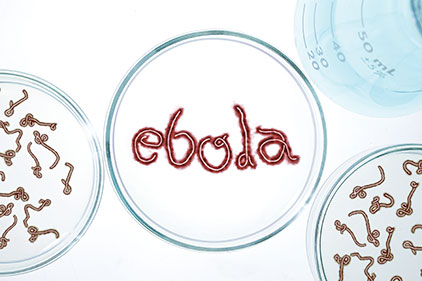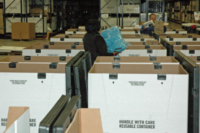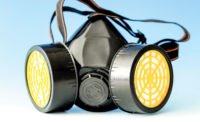Personal protective equipment (PPE) – and its correct use – is vital in preventing those tasked with caring for and transporting Ebola victims from getting the disease themselves. Since a major means of transmission* is through the mucous membranes of the eyes, nose or mouth, respiratory protection is a key piece of the PPE array needed to keep the virus at bay.
It is vital that healthcare facilities have on hand the types of respiratory protection and other PPE that is needed, and understand how to use it correctly.
Are hospitals ready?
Presbyterian Hospital Dallas ran a full-page apology in local newspapers after two nurses who cared for an initially misdiagnosed Ebola patient, Thomas Duncan, contracted the disease themselves. The hospital admitted that its Ebola readiness program had not been fully deployed by the time the first Ebola-stricken patient arrived in its E.R. (Duncan succumbed to his illness. The two nurses recovered.)
It was a wake-up call for healthcare facilities across the U.S. and a reminder to those tending to Ebola patients elsewhere to be vigilant in following the relevant PPE selection and use guidance, particularly with regard to donning and doffing procedures.
“It is important that our healthcare system be ready for the isolated possibility of another infected person,” said Dan Shipp, president of the International Safety Equipment Association (ISEA). “We probably weren’t ready when Thomas Duncan showed up at the ER in Texas. Now we are. I hope we will maintain this level of readiness. If this means there’s PPE now on hospital shelves that will never be taken out of its boxes, that’s the nature of readiness.
“From the perspective of the healthcare facility, an Ebola-infected person could show up at the ER any time, and it needs to be ready. The national perspective is a little different – the hospitals most likely to see an Ebola patient are those located near the airports that handle traffic from West Africa, and areas with a substantial African population.”
What respiratory protection is needed?
The Centers for Disease Control and Prevention (CDC) recommends1 the use of a powered air-purifying respirator (PAPR) with a full face shield, helmet, or headpiece (one with a self-contained filter and blower unit integrated inside the helmet is preferred) or an N95 or higher respirator in the event of an unexpected aerosol-generating procedure.
OSHA’s Respiratory Protection Standard, 29 CFR 1910.1342 details compliance elements such as fit testing, medical evaluation and training.
Donning and doffing
Donning and doffing items in a specific order using techniques intended to prevent exposure is of utmost importance in protecting the wearer. The CDC provides detailed instructions1 that go far beyond the scope of this article and should be carefully followed.
The order in which a PAPR is put on (and taken off) depends on whether it has a self-contained filter and blower unit that is integrated inside the helmet, or an external belt-mounted blower. Donning an N95 respirator must include a seal check. After the entire donning process is completed, the integrity of the ensemble must be verified by the trained observer.
Respiratory protection and other PPE must remain in place and be worn correctly for the duration of exposure to potentially contaminated areas, and should not be adjusted during patient care. If N95 respirators are used instead of PAPRs, healthcare workers must be carefully observed to ensure that they are not inadvertently touching their faces under the face shield during patient care.
Because of the potential for self-contamination, doffing is an especially high-risk procedure. The CDC says that PPE must be removed slowly and deliberately in the correct sequence, in a designated area and under the supervision of a trained observer. After removal, all PPE waste must be placed in a leak-proof infectious waste container.
The information is available, but – are hospitals ready?
For those who aren’t, the CDC has ordered $2.7 million worth of N95 respirators, PAPRs and ancillaries and other PPE that has been configured into rapidly deployable kits ready that can provide the protection needed by clinical teams to manage the care of one Ebola patient for up to five days.
“I think most hospitals’ purchasing decisions are being made based on the recommendations of their infection control specialists, who are responsible for the protection of the workers and preventing the spread of disease,” said Shipp. “They need to apply hazard analysis, but though there’s plenty of data available on what kind of protection workers need against Ebola, there’s still no clear way to assess the risk that an infected person will come through the door.”
Are manufacturers ready?
Shipp said companies that make PPE needed by healthcare workers were expanding capacity in response to global demand long before Ebola became a household word in the U.S.
“But a company cannot build new production lines overnight, or open new plants in response to inquiries or news stories. They respond to orders. They also need to ensure that the regular supply-and-demand cycle doesn’t get out of whack. A manufacturer cannot afford to cut off its regular customers, who are still going to be there when the current crisis abates.”
Shipp said there’s evidence that the demand in the U.S. is straining supplies available to West Africa, where they’re really needed. “The main thing to keep in mind is that this disease has to be conquered in West Africa, not California.”
*Ebola can also be spread through broken skin, body fluids or contaminated objects.
1. http://www.cdc.gov/vhf/ebola/hcp/procedures-for-ppe.html
2. www.osha.gov/pls/oshaweb/owadisp.show_document?p_id=12716&p_table=standards






